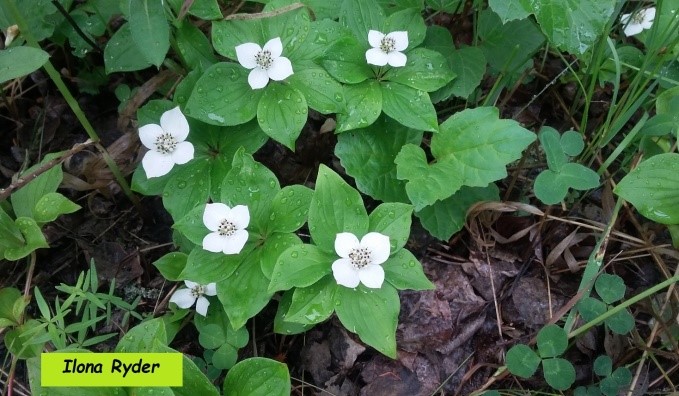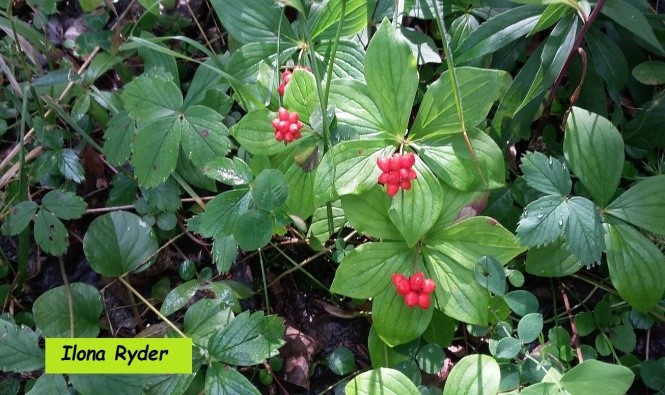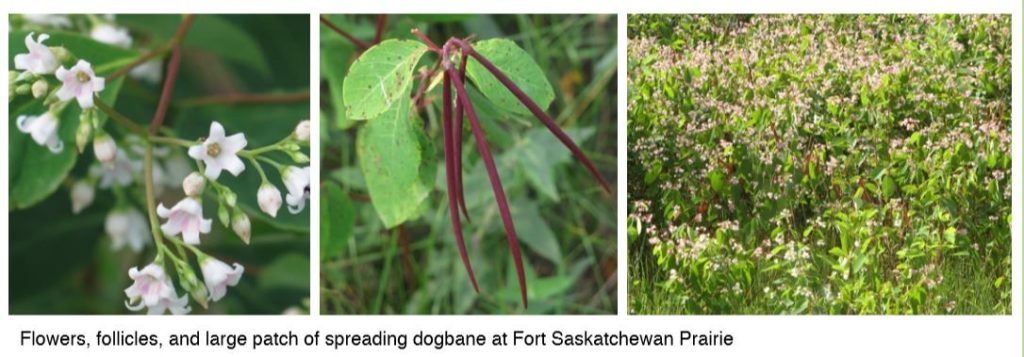Bunchberry (Cornus canadensis) is a carpet-like mat, circumpolar, ground flora in forests. The creeping roots from which the upper plants spring are up to 7.5 cm deep in the tree litter.
[lgc_column grid=”50″ tablet_grid=”50″ mobile_grid=”100″ last=”false”]
As the snow melts away, short stems of the bunchberry clone bearing six leaves with prominent veins somewhat parallel to smooth leaf edges appear. At the top of each stem a flower assemblage of 4 white outer bracts and a cluster of regular stamens with yellow (pollen) anthers and smooth dark pistils in the middle. When the pollen is ripe the touch of a tiny trigger hair on one of the petals, for example, by a visiting insect, causes the flower bud to open explosively and the stamens to shoot out pollen.
After pollination, bright-red berries form at the top of the pistils. During the summer these slowly enlarge and become red edible fruit for many birds and animals.
[/lgc_column]
[lgc_column grid=”50″ tablet_grid=”50″ mobile_grid=”100″ last=”true”]
WASKAHEGAN FIELD NOTES
It is believed that pollination is triggered by small insects in less than half a millisecond, making bunchberry the fastest plant in the world. Check out this Youtube video. It’s a good thing it doesn’t make a noise we can hear!
The Pipestone Creek section of the trail just east of A49 has a vast carpet of bunchberry.
[/lgc_column]
Sources:
- Details assembled thanks to the help of the members of the Edmonton Native Plant Group
- https://en.wikipedia.org/wiki/Cornus_canadensis


